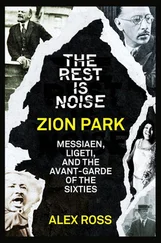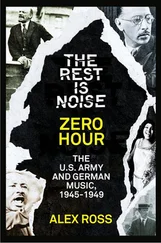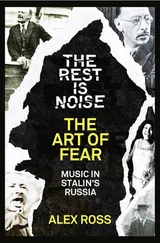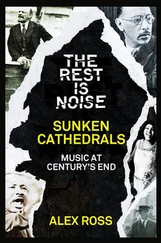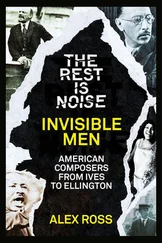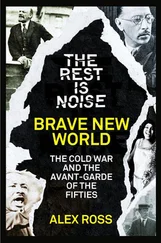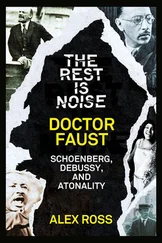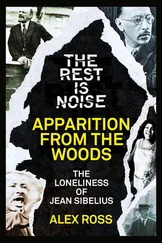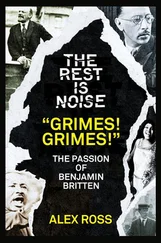In 1930, Cowell summed up his and Seeger’s ideas in an astonishing little book titled New Musical Resources, a kind of American Harmonielehre, which anticipated many “big ideas” of the postwar avant-garde. One central concept of the book was that harmony and rhythm should be interdependent; since any resonating tone consists of a certain number of vibrations per second, the ratios among the notes in any given chord could be used to dictate the rhythms of any given bar. For example, a chord of G, C, and E would translate into simultaneous pulses of three against four against five. Back in 1917 and 1919, Cowell put these ideas into practice in his Quartet Romantic and Quartet Euphometric, although he acknowledged that the pieces were (at that time) unplayable.
On one page of New Musical Resources Cowell proposed in passing that “highly engrossing rhythmical complexes” could be punched out on the paper roll of a player piano. Conlon Nancarrow, an Arkansas-born composer of radical tendencies who had fought for the Communists during the Spanish Civil War and then gone into Mexican exile, saw a world of possibility in Cowell’s suggestion, and relied on his mechanical instrument to execute insanely intricate rhythmic designs that only a many-armed robot pianist could have played. In the notorious Study No. 33, for example, tempos are superimposed according to the ratio √__2/2. This music was maximal rather than minimal, but its jazzy, hyperkinetic energy put it far outside the postwar modernist mainstream.
Harry Partch, the other great West Coast nonconformist of the twenties and thirties, wanted to “find a way outside”—to jettison the entire discourse of European music as it had been practiced since at least the time of Bach.
Partch was a true child of the Wild West. He spent much of his childhood in the railway outpost of Benson, Arizona, where his father was a government inspector. According to Bob Gilmore’s biography, young Harry caught glimpses of old-school outlaws on the edge of town. Moving to Los Angeles in 1919, Partch studied at the University of Southern California and made money as a movie-house pianist. Stylish, handsome, and gay—homosexuality is a common thread among composers of this time and place—Partch fell in love with a struggling actor named Ramón Samaniego, whom he met when both men were ushers at the Los Angeles Philharmonic. Samaniego ended the affair shortly after changing his name to Ramon Novarro and finding world fame as a silent-movie idol. That experience apparently cemented Partch’s determination to reject the mainstream in favor of the companionship of outcasts.
One day Partch asked himself why there are twelve notes in an octave, and couldn’t find a satisfactory answer. He buried himself in a study of the history of tuning, paying particular attention to Helmholtz’s On the Sensations of Tone. He emerged with the conviction that the modern Western system of equal-tempered tuning had to go. In its place, Partch would revive the tuning principles of the ancient Greeks, who, at least in theory, derived all musical pitches from the clean integer ratios of the natural harmonic series.
To this end, Partch invented a scale made up not of twelve notes but of forty-three. Extant instruments were incapable of producing such microtonal shadings, so Partch invented his own; he started by building an Adapted Viola and eventually fashioned an entire private orchestra of bowed, plucked, and keyboard instruments, together with Cloud-Chamber Bowls (Pyrex carboys obtained from the Berkeley Radiation Laboratory), the Kithara (modeled on a harp-like instrument seen on Greek vases), and the awesome Marimba Eroica (whose lowest notes boom forth from five-foot-high blocks). By the same token, Partch rejected modern styles of singing, which he considered artificial. Like Leoš Janáček, he sought to close the gap between song and speech, and his annotations of overheard American conversations bear a striking resemblance to Janáček’s transcriptions of Czech. A Western tradition clotted with studied abstractions—what Partch called the “Faustian” strain—would give way to “corporeal music,” an art at one with the body and the soul.
On a trip to Europe in the early thirties, Partch aroused the interest of William Butler Yeats, who watched as the young American composer chanted Psalm 137, “By the Rivers of Babylon,” while sawing on the Adapted Viola. Yeats was charmed, but the musical establishments of Europe and America ignored or mocked Partch’s ideas. By the time he returned to America in 1935, the Great Depression was at its height, and prospects for a conventional career seemed poor.
Partch now made a momentous decision: instead of begging for assistance from patrons or the WPA bureaucracy, he dropped out of civilization entirely, and became a hobo. For several years he crisscrossed the country, riding trains, doing manual labor, sleeping in shelters or in the wild, contracting syphilis, working occasionally as a proofreader, and, all the while, rethinking every parameter of music. In the desert city of Barstow, California, he found a set of inscriptions on a highway railing, which he wrote down for future use. An excerpt:
Car just passed by,
Make that two more, three more.
Do not think they’ll let me finish my story.
Here she comes, a truck, not a fuck, but a truck. Just a truck.
Hoping to get the hell out, here’s my name—
Johnnie Reinwald, nine-fifteen South Westlake Avenue, Los Angeles
These words reappeared in the 1941 cycle Barstow, for baritone and Adapted Guitar. The landscape is nothing like Copland’s idealized heartland, where the wheat is plentiful and golden. Partch’s songs captured the roughness of life during the Great Depression—you can practically smell rye on the breath of the singer. A lot of people would be hard-pressed to identify Barstow as “classical music” at all. It comes closer to the twisted white blues of Frank Zappa, Captain Beefheart, and Tom Waits. The tenuous situation of classical music in America was, for this composer, not a deficit but an advantage. In one essay he wrote: “There is, thank God, a large segment of our population that never heard of J. S. Bach.”
Harry Partch passed through the University of Southern California a few years too early to meet Arnold Schoenberg. This was probably just as well, because the grand old man of modern music would almost certainly have taken a dim view of Partch’s crusade against equal-temperament tuning. In general, Schoenberg was poorly equipped to comprehend the emergent West Coast aesthetic. For him, the ultimate sin was to repeat an idea unnecessarily (“Hi-yo, Silver!”), whereas the California composers were discovering the joys of insistent repetition and gradual change. Yet Schoenberg became an unlikely mentor for two other major figures of the California avant-garde: Lou Harrison and John Cage.
Harrison, a gentle soul in a century of sacred monsters, was born in 1917, the son of a West Coast Chrysler salesman. His mentors were a formidable group: he studied first with Cowell in San Francisco and then with Schoenberg in Los Angeles, and, during a generally unhappy New York period, he worked closely with Charles Ives and Carl Ruggles. From the ultra-moderns, Harrison acquired a flair for stark, prophetic utterances—questing rivers of chant, machinelike ostinatos, erupting dissonances, enveloping silences. From Cowell he picked up a lifelong love of non-Western traditions, especially the Javanese gamelan. And a reading of Partch’s Genesis of a Music in 1949 sparked an interest in just intonation, as pure-ratio tuning is known.
Ingrained in Harrison’s personality was a love of musical merriment, of hummable song and rollicking dance. He managed to assimilate these diverse strains into forms of Baroque poise and precision; his favorite composer was Handel. “Use only the essentials,” Schoenberg once said to his pupil. Harrison’s career was a creative misinterpretation of that remark; it gave him permission to vacate the overcrowded city space of modern music and to camp out in a desert landscape of long drones and lulling patterns.
Читать дальше

